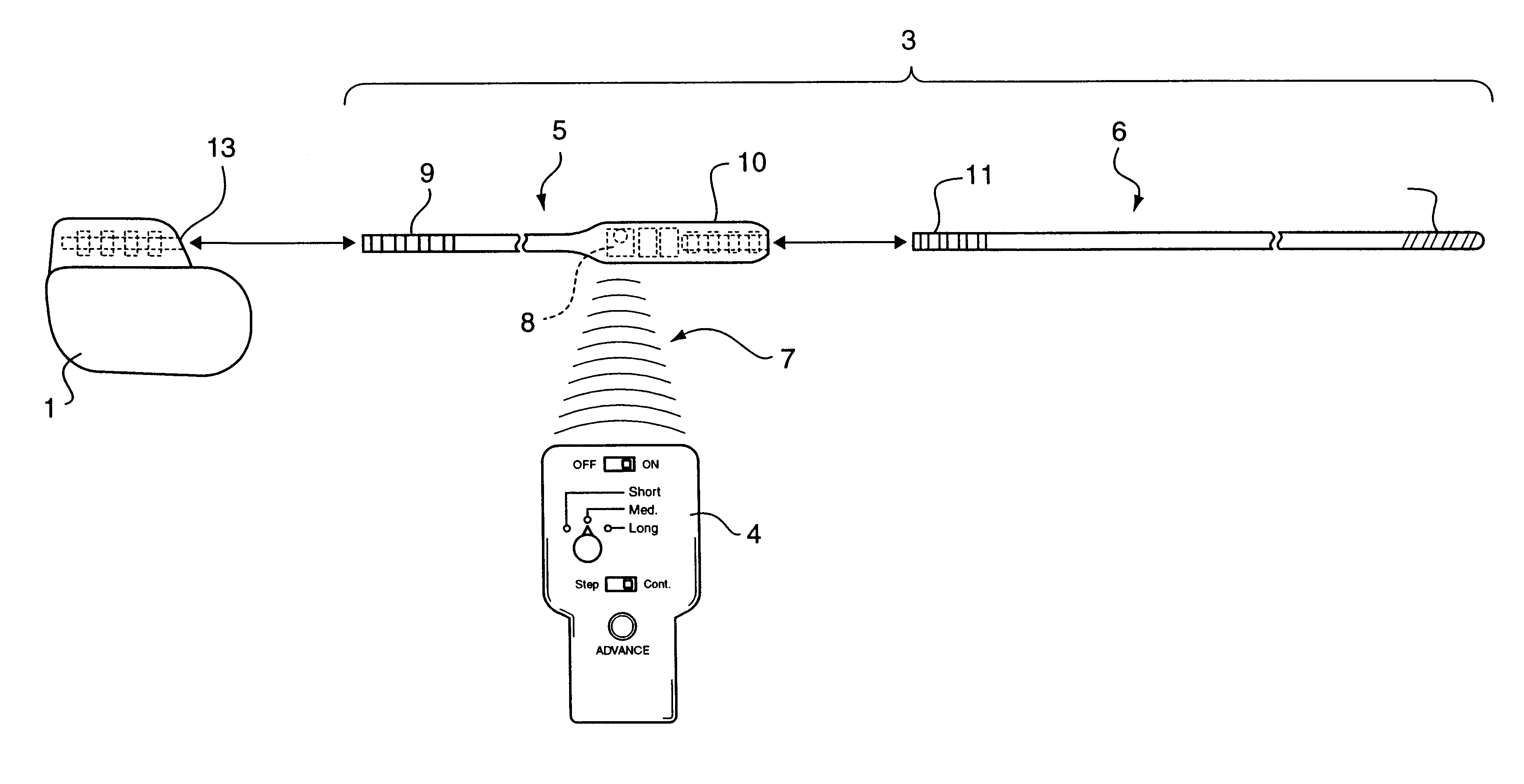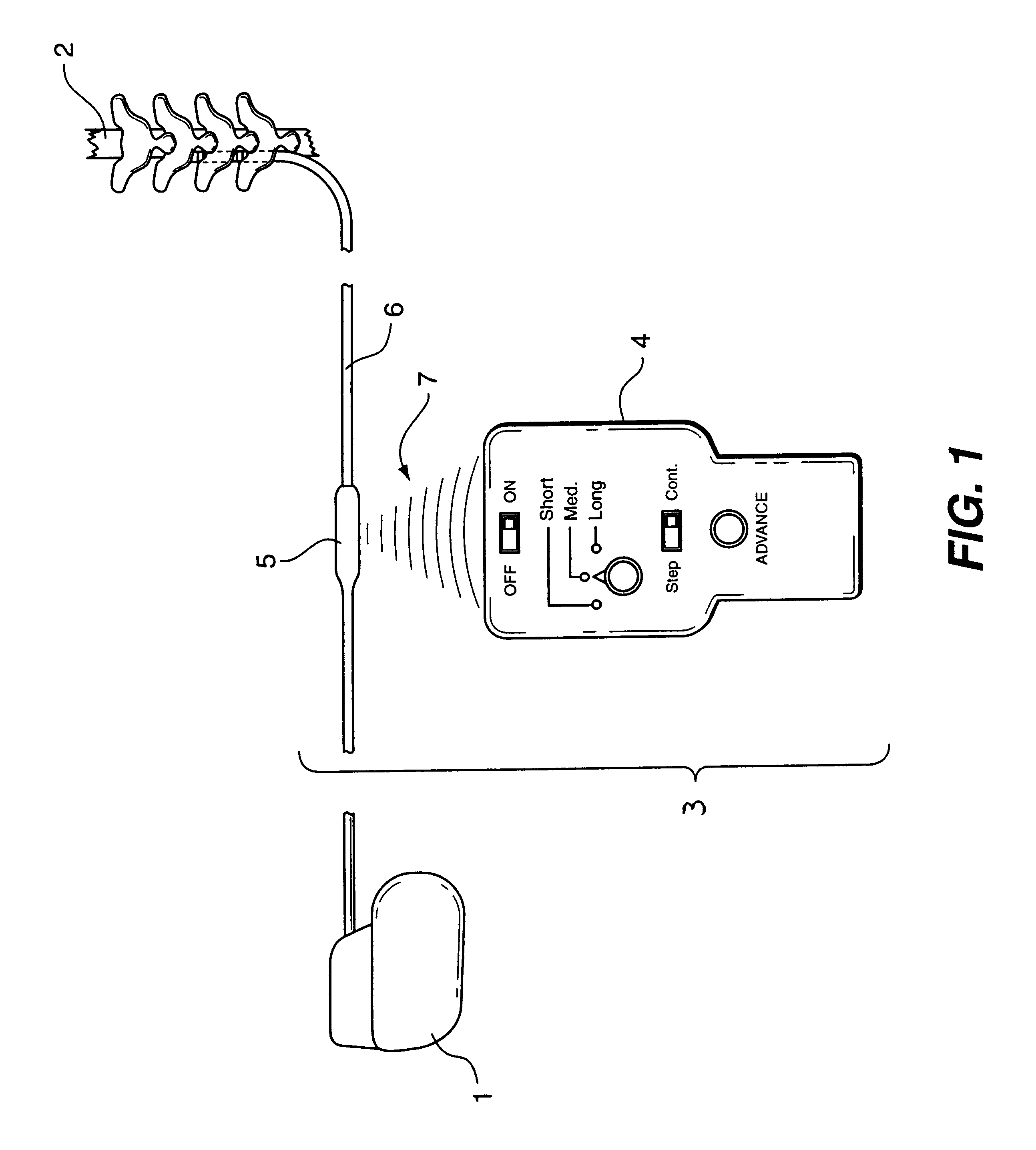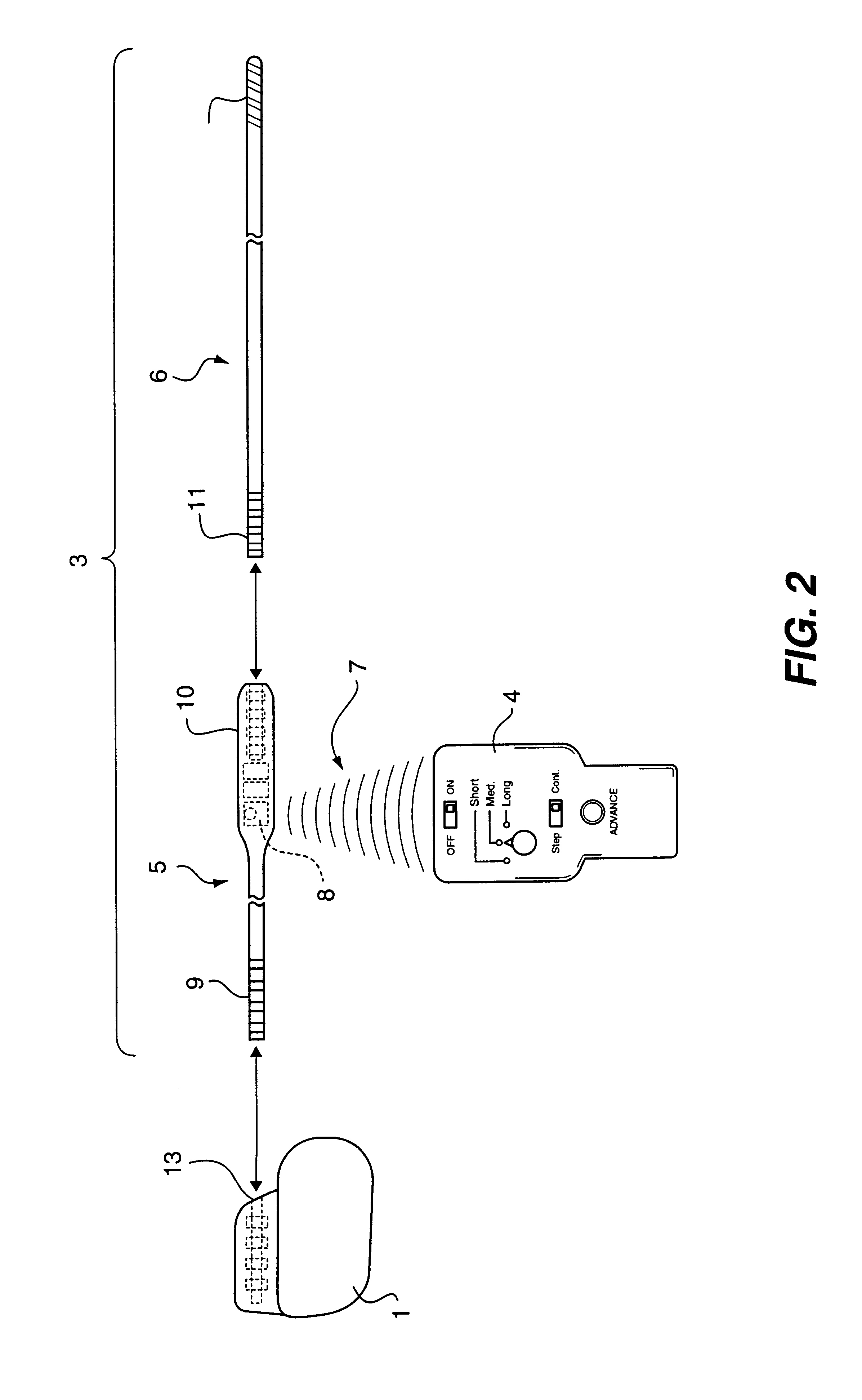Non-invasively maneuverable lead system
a lead system and non-invasive technology, applied in the field of non-invasively maneuverable lead systems, can solve the problems of difficult if not impossible to recruit the target nerve, trying to recruit specific nerve fibers without affecting other nerve fibers,
- Summary
- Abstract
- Description
- Claims
- Application Information
AI Technical Summary
Benefits of technology
Problems solved by technology
Method used
Image
Examples
Embodiment Construction
)
In FIG. 1 there is illustrated a block diagram of a non-invasively maneuverable lead system 3 constructed according to the teachings of the present invention and connected between an implanted pulse generator 1 and a spinal cord 2.
An electrode position controller 4 of the system 3 is used by a physician or medical technician to cause non-invasive, longitudinal micro-steps in lead position within the epidural space proximal to the spinal cord 2. This is accomplished by transmitting electromagnetic waves (drive signals) from the electrode position controller 4 to the lead extension 5 which causes small, controlled changes in electrode position of a stimulating lead 6 relative to the stationary target nerve.
In FIG. 2 there is shown an exploded view of the non-invasively maneuverable lead system 3. It shows how an implanted pulse generator 1, the lead extension 5 and the stimulating lead 6 are connected. It also shows the electrode position controller 4 transmitting electromagnetic wav...
PUM
 Login to View More
Login to View More Abstract
Description
Claims
Application Information
 Login to View More
Login to View More - R&D
- Intellectual Property
- Life Sciences
- Materials
- Tech Scout
- Unparalleled Data Quality
- Higher Quality Content
- 60% Fewer Hallucinations
Browse by: Latest US Patents, China's latest patents, Technical Efficacy Thesaurus, Application Domain, Technology Topic, Popular Technical Reports.
© 2025 PatSnap. All rights reserved.Legal|Privacy policy|Modern Slavery Act Transparency Statement|Sitemap|About US| Contact US: help@patsnap.com



